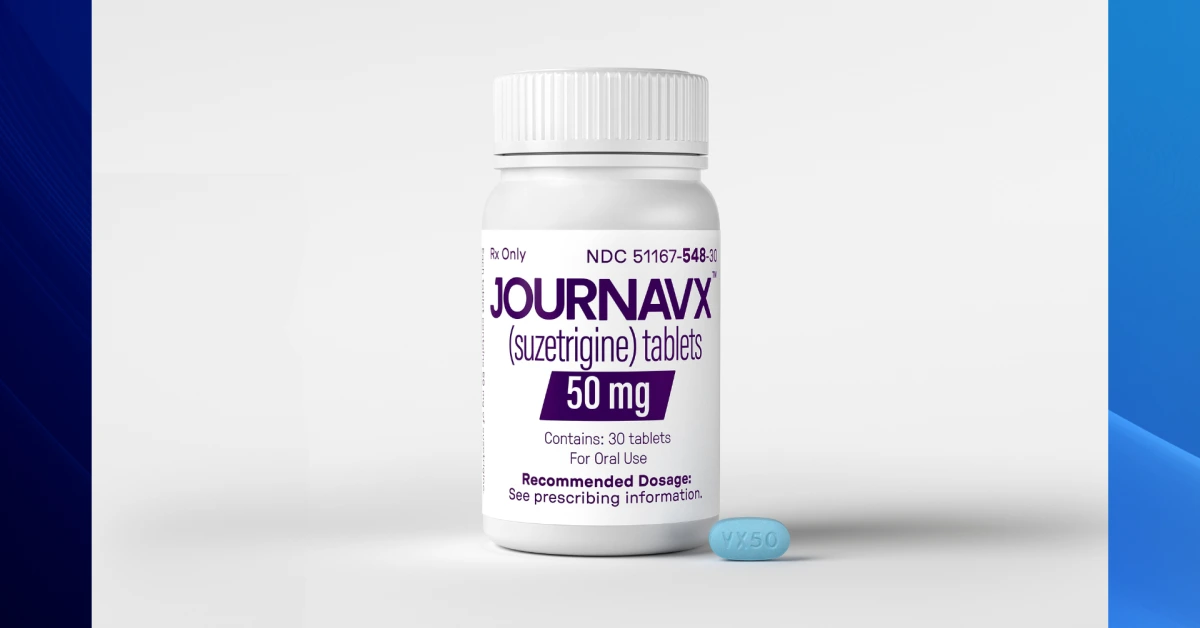
USA – The U.S. Food and Drug Administration (FDA) has approved a groundbreaking pain medication, Journavx, developed by Vertex Pharmaceuticals.
This new pill offers an alternative to opioids like OxyContin and Vicodin, which are associated with high risks of addiction and overdose. Journavx is designed for short-term pain relief, such as pain following surgeries or injuries.
This is the first major innovation in pain management in over 20 years, providing an option beyond opioids and common over-the-counter drugs like ibuprofen or acetaminophen. However, while the drug holds promise, its effectiveness has been described as modest.
Clinical trials involving more than 870 patients recovering from surgeries showed that Journavx provided better pain relief than a placebo but did not outperform an opioid-acetaminophen combination pill.
Michael Schuh, a pharmacist and pain expert at the Mayo Clinic, commented, “It’s not a slam dunk on effectiveness, but it is a slam dunk in that it’s a very different pathway and mechanism of action. So, I think that shows a lot of promise.”
Journavx works differently from opioids. Instead of binding to receptors in the brain that process nerve signals, which can lead to addiction, the drug blocks proteins responsible for sending pain signals to the brain.
“In trying to develop medicines that don’t have the addictive risks of opioid medicines, a key factor is working to block pain signaling before it gets to the brain,” explained Dr. David Altshuler of Vertex Pharmaceuticals.
The drug’s development stems from research into people with a rare hereditary condition that makes them unable to feel pain. This innovative approach could reshape pain management, offering hope for safer treatments.
However, the new medication comes with challenges. Journavx has side effects, including nausea, constipation, itching, rash, and headache.
Additionally, its price is significantly higher than generic opioids. At US $15.50 per pill, it far exceeds the US $1 or less typically spent on generic opioid medications.
Vertex has been working on Journavx since the 2000s when opioid overdoses were surging due to widespread prescriptions.
Although prescriptions have declined in recent years, the opioid epidemic has shifted toward illicit drugs like fentanyl. Despite this shift, the need for non-addictive pain management solutions remains critical.
Dr. Charles Argoff of Albany Medical Center, who consulted on the drug’s development, emphasized its safety, stating, “The new medication has side effect profiles that are inherently, not only different but don’t involve the risk of substance abuse and other key side effects associated with opioids.”
While the FDA approval for acute pain is a milestone, Vertex has its sights set on a larger goal: treating chronic pain.
Chronic pain represents a greater financial opportunity, but the company faced a setback in December when mid-stage trials for chronic nerve pain showed disappointing results. The drug performed no better than a placebo for conditions like lower back and leg pain.
Despite this, Vertex plans to conduct a new, late-stage trial, believing that a different study design could yield better results and lead to FDA approval for chronic pain.
Wall Street analysts have noted the potential of Vertex’s pipeline, but the recent trial failure has raised concerns about its long-term prospects.
XRP HEALTHCARE L.L.C | License Number: 2312867.01 | Dubai | © Copyright 2025 | All Rights Reserved